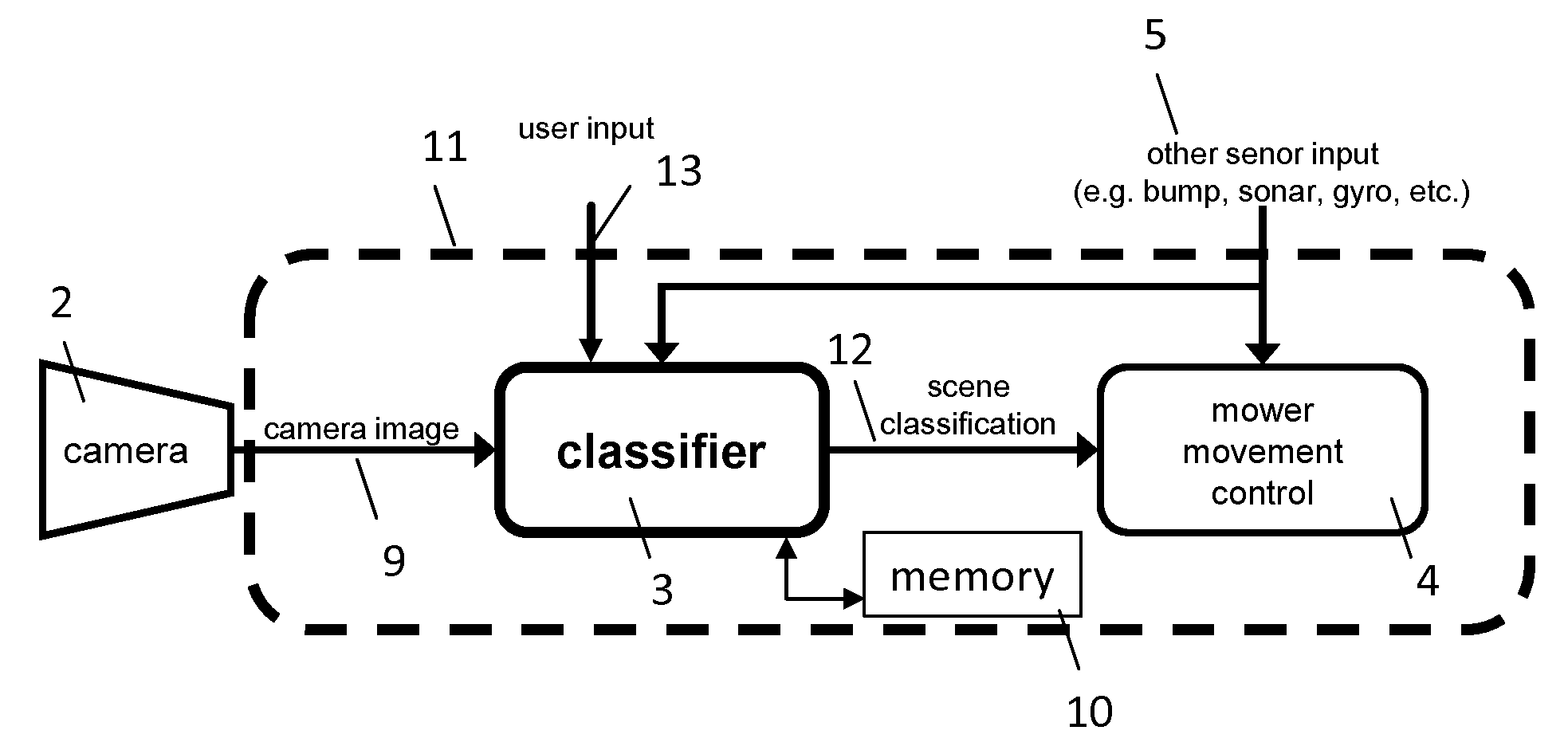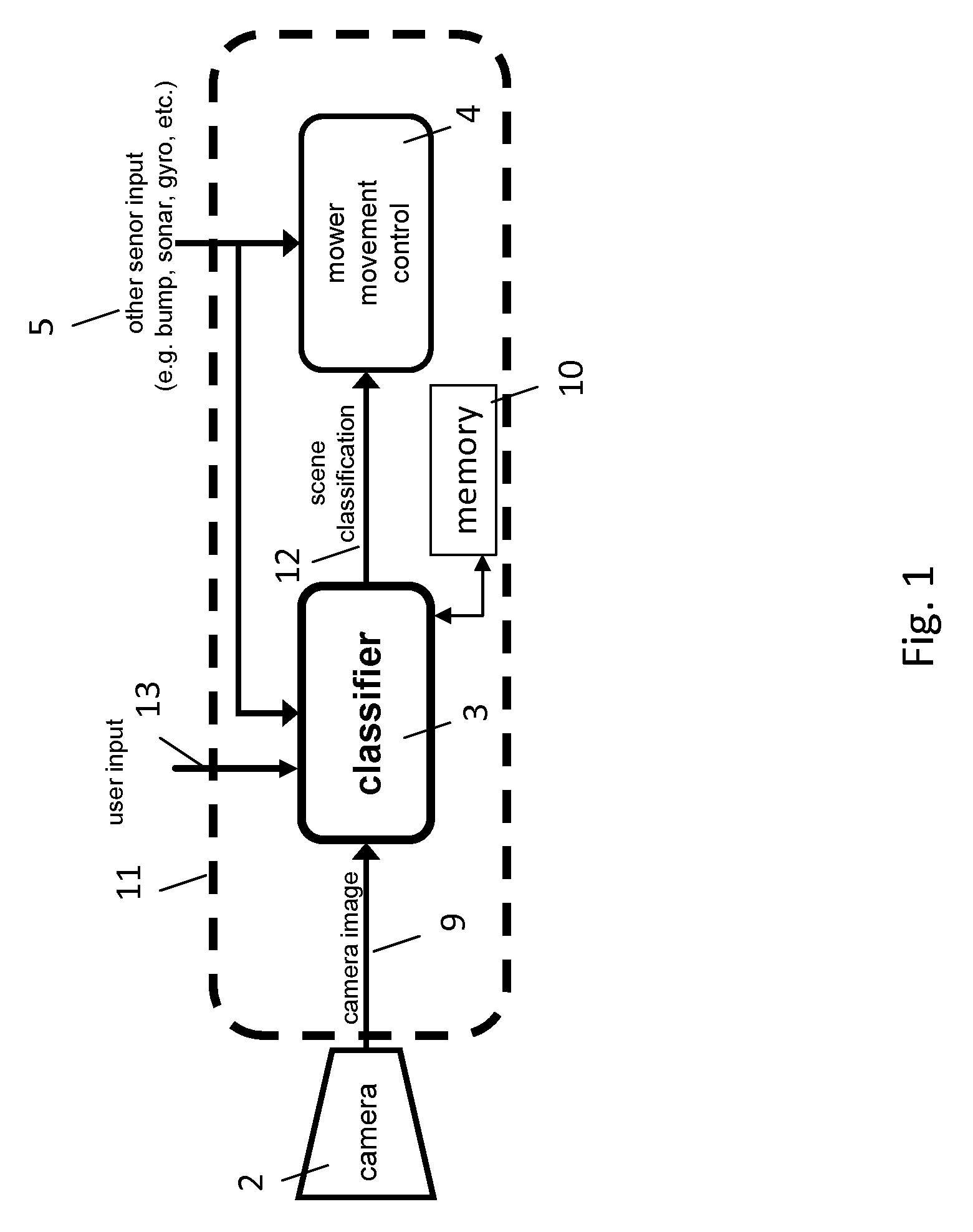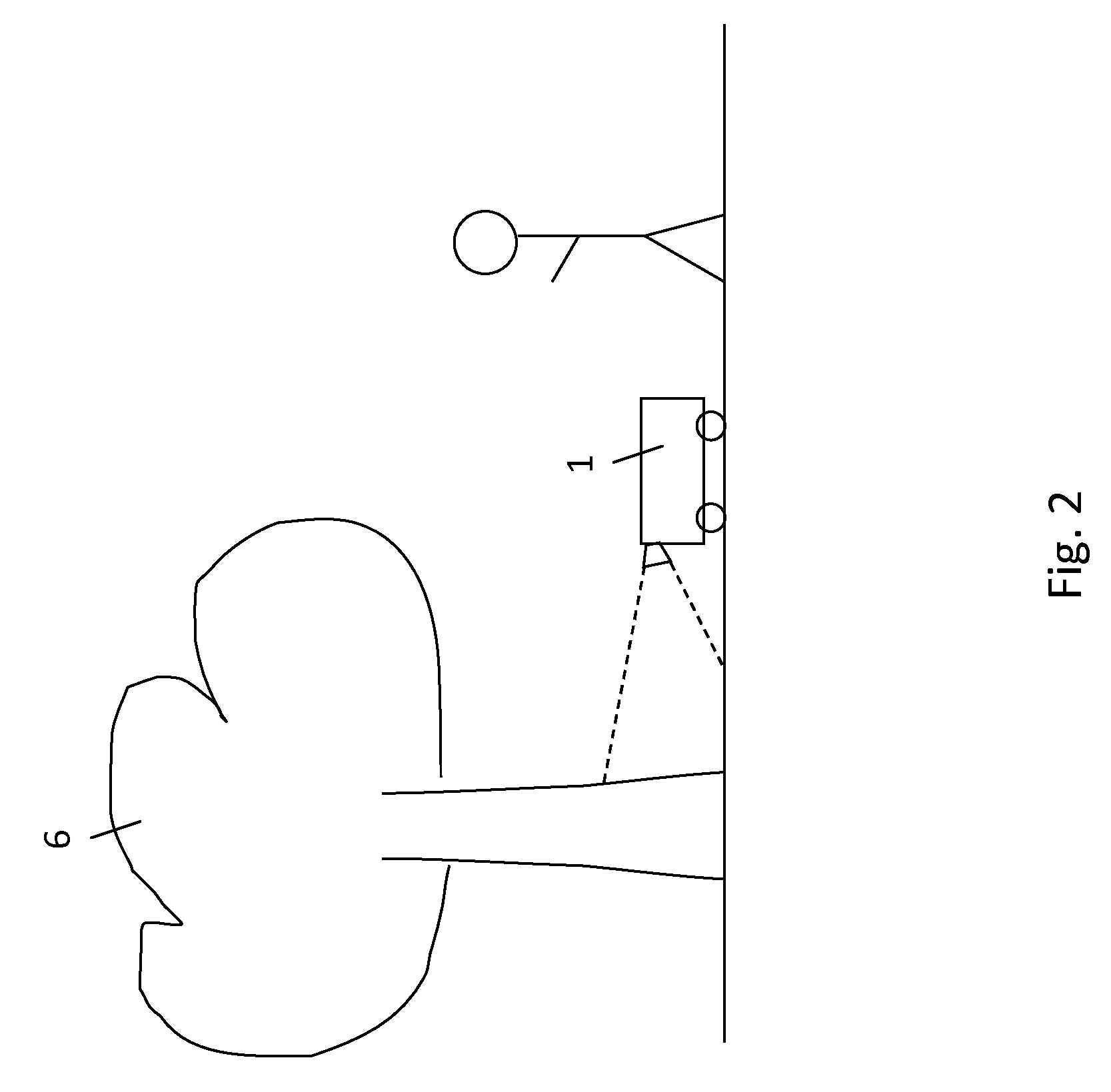Trainable autonomous lawn mower
a lawn mower and autonomous technology, applied in the direction of vehicle position/course/altitude control, process and machine control, instruments, etc., can solve the problems of difficult to anticipate all potential kinds of obstacles, inability to recognize flat obstacles like smart phones or hoses, and inability to reliably work with bump and sonar sensors, so as to improve obstacle identification and the behavior of the mower, the effect of easy customization and fine tuning
- Summary
- Abstract
- Description
- Claims
- Application Information
AI Technical Summary
Benefits of technology
Problems solved by technology
Method used
Image
Examples
Embodiment Construction
[0051]The figures show an autonomous or robotic lawn mower 1 capable of visual obstacle detection and thus having the capacity to detect a wide range of different obstacles 3, which are otherwise hard to detect with the typically used sensors, e.g. bump sensors and / or sonar sensors. For example, flat mobile phones or hoses are prone to be driven over by the mower, thereby damaging these objects as well as the mower blades.
[0052]A common way for visual obstacle detection is to use a learning or classifier module 3 (see FIG. 1) that is implemented in a computing unit 11 of the lawn mower. This classifier module 3 is trained with pre-set information prior to the delivery of the mower to the user, and is thus able to detect obstacles 6 that appear in the visual input images of at least one camera 2 of the mower 1, which camera 2 supplies an output signal to the computing unit of the lawn mower. The pre-set information about the obstacles 6 is stored in a memory 10 of the mower 1. The me...
PUM
 Login to View More
Login to View More Abstract
Description
Claims
Application Information
 Login to View More
Login to View More - R&D
- Intellectual Property
- Life Sciences
- Materials
- Tech Scout
- Unparalleled Data Quality
- Higher Quality Content
- 60% Fewer Hallucinations
Browse by: Latest US Patents, China's latest patents, Technical Efficacy Thesaurus, Application Domain, Technology Topic, Popular Technical Reports.
© 2025 PatSnap. All rights reserved.Legal|Privacy policy|Modern Slavery Act Transparency Statement|Sitemap|About US| Contact US: help@patsnap.com



